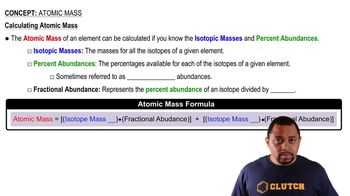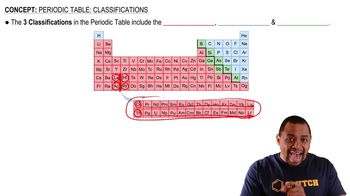Here are the essential concepts you must grasp in order to answer the question correctly.
Isotopes
Isotopes are variants of a chemical element that have the same number of protons but different numbers of neutrons, resulting in different atomic masses. For silver, the two isotopes are 107^Ag and 109^Ag, each contributing to the element's average atomic weight based on their relative abundances.
Recommended video:
Atomic Weight Calculation
The atomic weight of an element is calculated as the weighted average of the masses of its isotopes, taking into account their relative abundances. This involves multiplying the mass of each isotope by its percentage abundance (expressed as a fraction) and summing these values to obtain the overall atomic weight.
Recommended video:
Periodic Table
The periodic table organizes elements based on their atomic number and properties, providing essential information such as atomic weights. Checking the atomic weight of silver in the periodic table allows for verification of calculations and understanding of the element's characteristics in a broader context.
Recommended video:
Periodic Table Classifications




